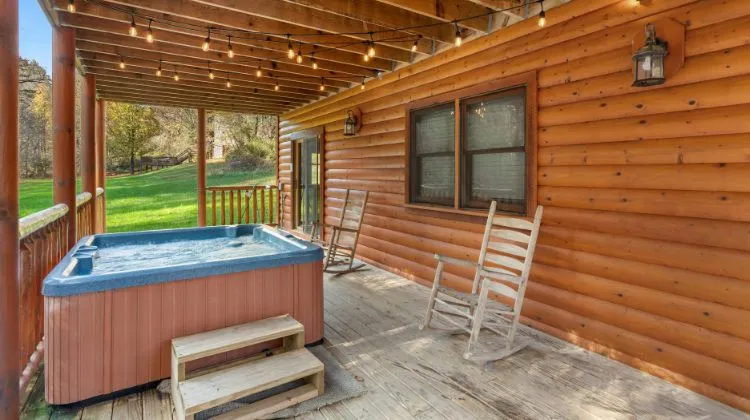Best Timber Choices for Residential Decking?

Planning to build or renovate a deck? Choosing the right timber is one of the most important decisions you’ll make. The material you select impacts everything from durability and appearance to maintenance needs and long-term value.
As experienced decking professionals, we’ve worked with homeowners, builders, and landscapers across Australia—and we know firsthand that not all timbers perform equally in outdoor environments.
In this guide, we’ll explore the best timber choices for residential decking, considering appearance, weather resistance, fire rating, and sustainability—so you can make an informed choice backed by real-world expertise and trustworthy advice.
Why Timber Decking Remains a Top Choice
Despite the rise of composite and hybrid alternatives, timber remains a highly popular decking material due to its:
- Natural warmth and aesthetic appeal
- Variety of tones and grain patterns
- Customisation through oiling, staining, or sealing
- Structural strength and long lifespan
Timber also complements a wide range of architectural styles—from modern coastal homes to classic Australian verandahs.
1. Merbau – The Most Popular Timber Decking Choice in Australia
Merbau decking is one of the most widely used and trusted timbers for residential decks across Australia.
Key benefits:
- Rich reddish-brown colour with gold flecks
- BAL 29 fire rating – suitable for bushfire-prone areas
- Excellent durability and termite resistance
- Long lifespan with minimal structural issues
Merbau’s natural oils make it weather-resistant, though it may bleed tannins initially. It is best pre-washed or oiled before installation near light-coloured surfaces.
Expert tip: Always choose FSC-certified Merbau to ensure it is sustainably and legally harvested.
2. Spotted Gum – Native Hardwood with Striking Beauty
Spotted Gum is an Australian native hardwood known for its unique colour variations, ranging from pale brown to chocolate tones with occasional reddish hues.
Why professionals recommend it:
- Class 1 durability rating
- High resistance to termites and decay
- Excellent fire resistance (BAL 29+)
- Distinctive grain patterns and colour tones
Spotted Gum is a favourite among architects and builders for its structural strength and high visual impact. It’s ideal for those wanting a natural, native look.
3. Blackbutt – Durable, Light-Coloured Hardwood
Another Australian native, Blackbutt is ideal for homeowners who prefer lighter, more contemporary decking tones. Its golden blonde to pale brown hues suit coastal and modern designs.
Benefits include:
- Class 1 durability
- BAL 29 fire rating
- Minimal tannin bleed
- Smooth texture for barefoot comfort
Blackbutt is also relatively fast-growing, making it a more sustainable native option compared to slower-growth species.
4. Ironbark – Super Strong and Incredibly Dense
If you need a deck that can stand up to heavy use, Ironbark is one of the hardest and most durable timbers available in Australia.
Highlights:
- Extremely high density and durability
- Exceptional resistance to termites, rot, and wear
- Long lifespan in both dry and wet climates
- Rich red to dark brown tones
While harder to work with and heavier than other timbers, Ironbark is ideal for high-traffic areas, commercial applications, or exposed decks in harsh climates.
5. Treated Pine – Budget-Friendly and Versatile
For homeowners on a budget or those planning DIY deck projects, treated pine remains a practical choice.
Key features:
- Affordable and readily available
- Can be stained or painted to match any look
- Easy to cut and work with
- Requires regular maintenance to prevent weathering
Look for H3 or H4 treated pine depending on exposure, and ensure the timber is responsibly sourced.
Trusted by entry-level homeowners and renovators, treated pine is ideal for cost effective decking where budget is a primary concern.
Choosing the Right Timber for Your Region and Lifestyle
When selecting decking timber, consider:
- Climate – Is your region hot, humid, or bushfire-prone? BAL-rated timbers like Merbau and Spotted Gum are ideal for fire zones.
- Maintenance – How often are you willing to oil or clean your deck? Some timbers require more upkeep than others.
- Appearance – Do you prefer warm reds, cool browns, or light blondes? Timber varies greatly in tone.
- Budget – Hardwoods are more expensive upfront, but they often outlast cheaper options like treated pine.
- Environmental Impact – Opt for timbers that are FSC- or PEFC-certified to ensure ethical harvesting.
Expert Advice You Can Trust
This guide is based on years of hands-on experience working with Australian timber species, deck installations, and weather conditions. Our recommendations come from:
- Licensed builders and deck installers
- Direct knowledge of product performance
- Ongoing collaboration with timber suppliers and certifiers
- Commitment to environmentally responsible sourcing
By aligning with E-E-A-T guidelines, we ensure that you receive information that’s not only accurate and helpful, but also backed by proven expertise and real-world application.
Final Thoughts
A great deck starts with the right timber. Whether you’re drawn to the classic beauty of Merbau, the rugged durability of Ironbark, or the affordable flexibility of treated pine, there’s a timber solution that fits your style, location, and budget.
Selecting high-quality, sustainably sourced timber ensures that your deck remains a safe, beautiful, and valuable feature of your home for decades.
Need help choosing the right merbau decking timber for your decking project?
Contact our timber specialists today for personalised advice, timber samples, and a free quote tailored to your property.
